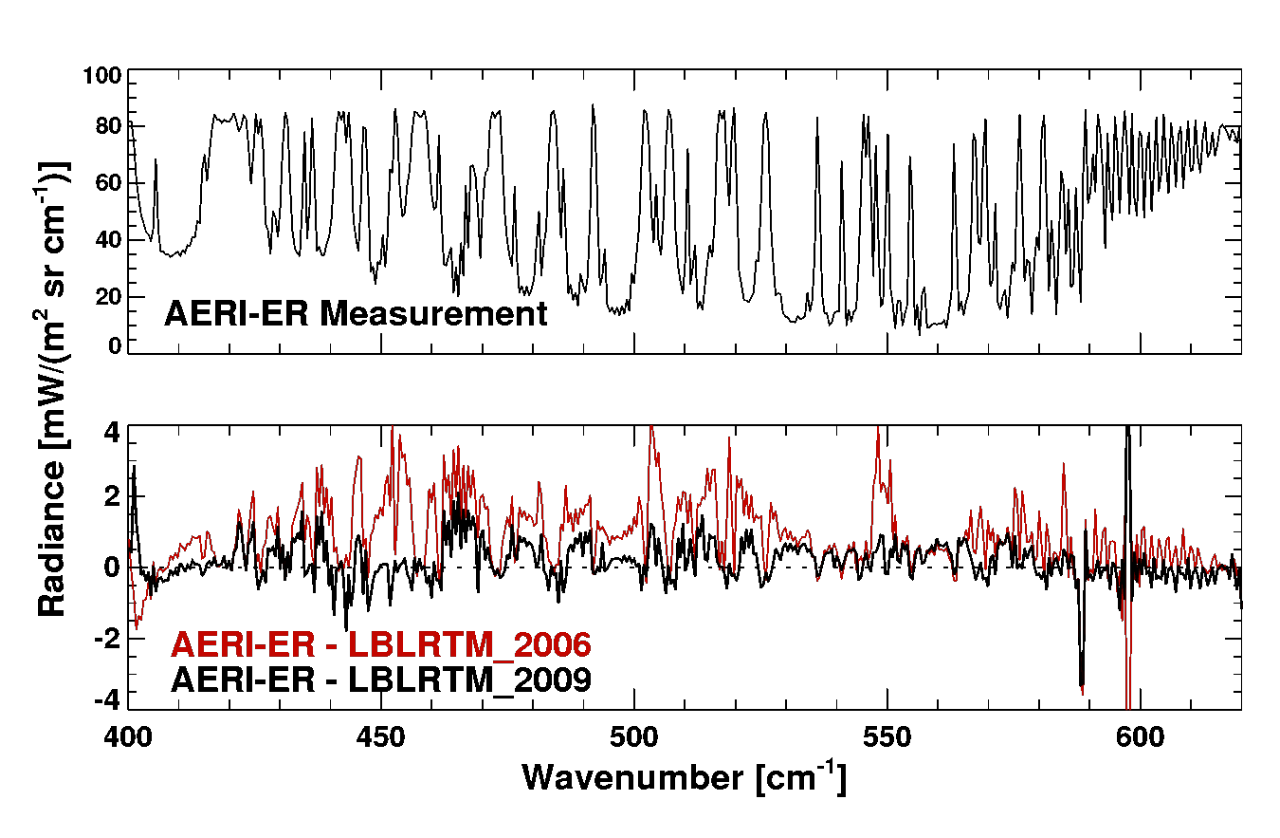Improving the Treatment of Radiation in Climate Models
Submitter
Delamere, Jennifer S. — University of Alaska Fairbanks
Area of research
Radiation Processes
Journal Reference
Science
Scientists in DOE’s Atmospheric Radiation Measurement (ARM) Climate Research Facility and the Atmospheric System Research (ASR) program have updated computer models that calculate the transfer of radiant energy in the Earth’s atmosphere. The model updates focus on far-infrared (lambda > 15.0 µm) radiative processes due to water vapor, which provide a large fraction of Earth’s outgoing longwave radiation and influence upper tropospheric vertical motion. Historically, the lack of spectrally resolved radiometric instruments and the opacity of the lower atmosphere have precluded extensive studies of far-infrared water vapor absorption properties.
Impact
However, significant information can be gleaned from radiation measurements during very low water vapor conditions, such as those during the Alaskan winter. ARM sponsored the Radiative Heating in Underexplored Bands Campaign (RHUBC) at its North Slope of Alaska site in February–March 2007 to obtain the measurements necessary to improve our understanding of far-infrared radiative processes. Measurements of downwelling infrared radiation by the Extended-Range Atmospheric Emitted Radiance Interferometer (AERI-ER) during RHUBC were compared to calculations from the line-by-line radiative transfer model LBLRTM; the measurement-model differences were resolved by modifying important model parameters associated with water vapor absorption calculations.
Summary
The improved radiative transfer calculations will enhance simulations of the middle-to-upper troposphere in general circulation models. The updated reference radiative transfer model, LBLRTM, and the accelerated radiation code, RRTM, are freely available from Atmospheric and Environmental Research, Inc.’s website (http://rtweb.aer.com).


